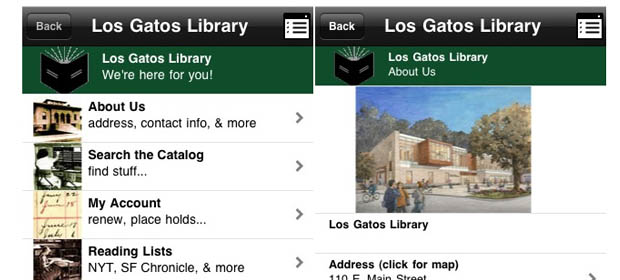
We recently released a report, U.S. Public Libraries and the Use of Web Technologies, 2012, that presents the findings of our longitudinal study of nearly 600 U.S. public libraries’ use of web technologies and social media. One of our main findings was that from 2010 to 2012, the percentage of libraries catering to mobile devices increased dramatically. Researchers looked for any of the following types of mobile-friendly website access:
- Mobile version of website: The URL redirects to a mobile site (e.g., “m.citylibrary.org”) when viewed on a mobile device.
- Mobile app: A software application is downloaded by users to run on their smartphones or other mobile devices.
- Responsive design: The website is designed in a way that is accessible to a wide range of devices, from smartphones to desktop LCDs, through the use of fluid, proportion-based grids, flexible images, and media queries.
We found that three-fourths of the largest libraries (serving 500,000+), about 3 in 5 libraries serving between 25,000 and 499,999, one-third of libraries serving between 10,000 and 24,999, and 17% of the smallest libraries (serving less than 10,000) offered some type of mobile-friendly website access. In contrast, in 2010, just 12% of the largest libraries, 3% of libraries serving between 100,000-499,999, and no libraries serving less than 100,000 offered mobile-friendly website access.
In terms of the specific type of mobile access,
- 3 in 5 of the largest libraries, about half of libraries serving between 25,000 and 499,999, 1 in 5 libraries serving between 10,000 and 24,999, and 2% of the smallest libraries offered apps;
- 2 in 5 of the largest libraries, about one-fourth of libraries serving between 25,000 and 499,999, 1 in 5 libraries serving between 10,000 and 24,000, and 14% of the smallest libraries had mobile versions of their sites; however,
- just 9 libraries used responsive design.
Check out the following resources for more information about this study:
- Infographic: summarizes the study’s findings in a graphical format.
- Fast Facts: presents study highlights.
- Closer Look report: contains detailed information about the study’s results.
- U.S. Public Libraries and the Use of Web Technologies webpage: contains all published information from the 2008, 2010, and 2012 studies.
Note: This post is part of our series, “The Weekly Number.” In this series, we highlight statistics that help tell the story of the 21st century library.